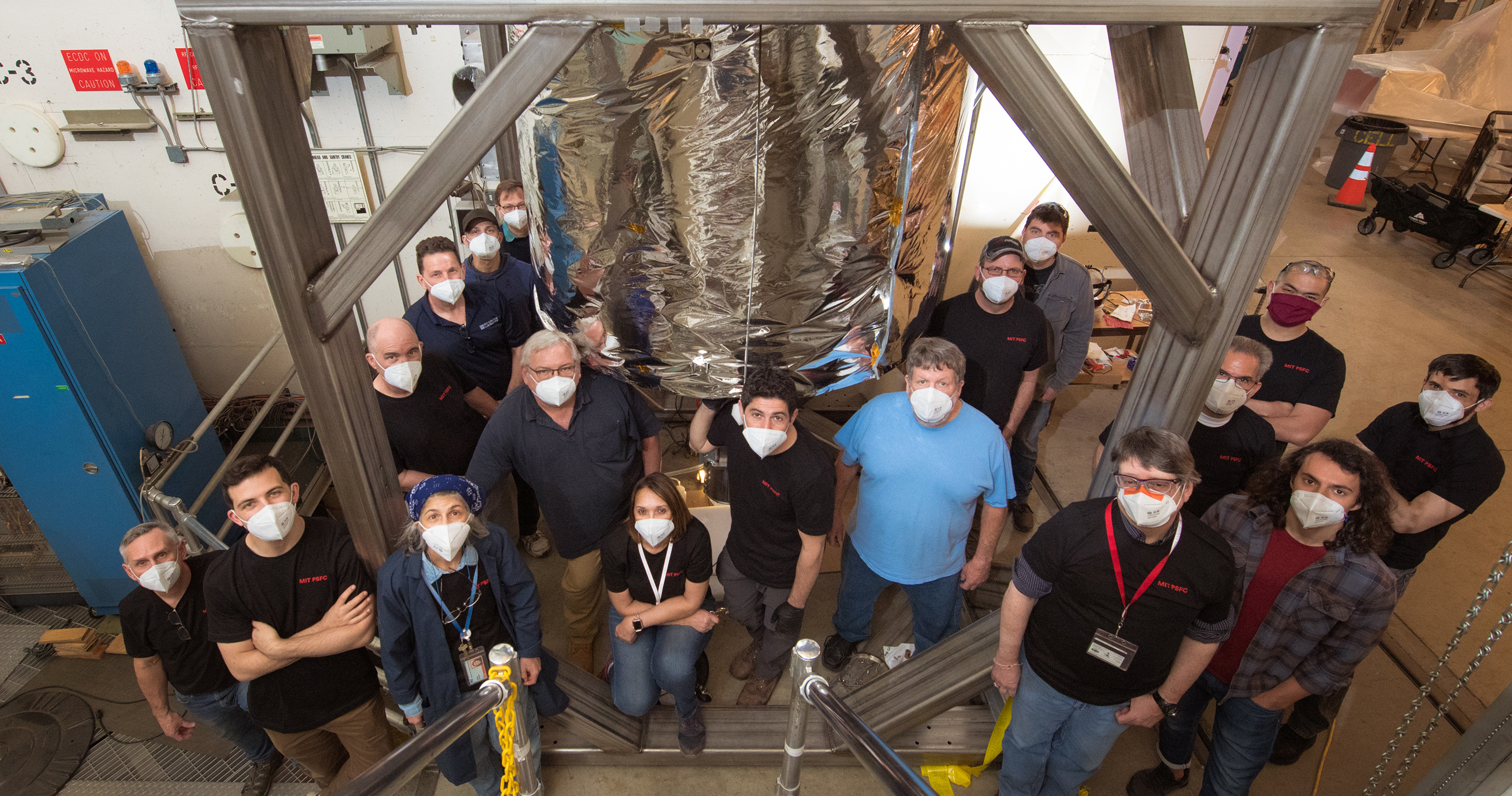Charging the magnet
A novel design for the TFMC current leads makes manufacturing simpler, operation easier by Paul Rivenberg/MIT PSFC. August 2021
As the Toroidal Field Model Coil (TFMC) is being prepared for testing, Mechanical Engineer Vinny Fry is readying his contributions to the magnet design. The TFMC is a scaled prototype for magnets planned to surround the doughnut-shaped vacuum chamber of SPARC, the fusion collaboration between MIT and CFS. These magnets will create fields strong enough to keep the hot fusing plasma away from the tokamak walls. Fry is responsible for the current leads, which provide power to the magnet, and a cable bus, which connects the leads to the magnet.
“You can think of the two current leads as just like wires in a wall plug for charging your phone,” Fry explains. “One of them is the ‘positive’ and one of them is the ‘negative‘ – and they supply current to the magnet. For a sense of scale, iPhone chargers carry about 1 amp of current and in the process generate about 20 Watts of heating power. The current leads will be able to supply 45,000 amps, but the heating to the magnet will be less than 20 Watts.”
In order to test the magnet system, the leads, cable bus and TFMC need to be cooled to operating temperatures while power is supplied.
Three meters tall and 0.4 m in diameter, the leads will be positioned vertically within a cryostat (4m tall; 2m wide), their tops outside the container at room temperature. Each lead is mainly copper, and will be cooled in part by an individual chamber of liquid nitrogen located approximately at its center. This differs from standard testing which depends entirely on cold helium. This type of lead is called ‘binary’ because it is cooled by both liquid nitrogen and, at the bottom, helium. It will be the largest liquid-nitrogen-cooled binary lead ever built by a factor of about 4 in terms of power.
The novel design of the current leads makes manufacturing simpler and easier to operate, but presents some challenges. Because the magnet performance improves the colder it gets, the leads need to supply power without significantly heating up the system, a challenge when they will be supplying 45,000 amps to the TFMC.
The cable bus delivering this power consists of two high-temperature superconducting (HTS) cables about 1 inch in diameter. A hole down the center allows the cables to be cooled by 20K helium gas while the superconductors are carrying current to the magnet. The TFMC is cooled by this same cold helium before it is sent to the cable bus system. As both the TFMC and current leads cool they shrink, causing the cable to stretch. Fry points out that the design must be flexible so that cool down does not lead to damage and a loss of power.
Successful testing will mean the designs can be “copied and pasted” into SPARC, saving valuable time, given the goal of having SPARC operational around 2025.
“The SPARC magnets will be similar current to what we are testing," says Fry, "and the magnet itself will be similar in scale. So the design of the leads will be close to identical.”
Fry expects the cable bus design will also be transferable to SPARC, which will prove valuable in designing the complete energy feed system.
